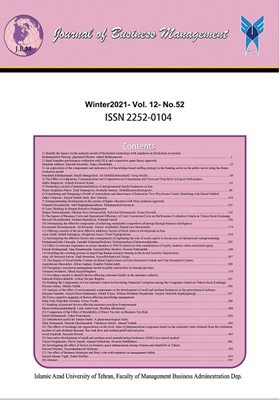Bank branches performance evaluation with DEA and cooperative game theory approach
Subject Areas : business managementMahdieh Akhbari 1 * , Marzieh Mozafari 2 , Zahra Abodollahi 3
1 - Department of Industrial Engineering, Electronic Branch, Islamic Azad University, Tehran, Iran
2 - Department of Industrial Engineering, Electronic Branch, Islamic Azad University, Tehran, Iran
3 - Department of Industrial Engineering, Electronic Branch, Islamic Azad University, Tehran, Iran
Keywords: Data envelopment analysis, Performance Evaluation, cooperative game theory, Shaply value. Classification,
Abstract :
Classical data envelopment analysis models calculate the performance of decision-making units based on a common performance boundary and make no distinction between efficient units. In this study, the method of super-efficiency and cross-efficiency is used to rank the efficient branches of banks before the cooperation phase. Then, in the cooperation phase, each efficient branch is considered as a player and the subdivisions of the efficient branches are considered as a coalition, and the problem is examined using the method of cooperative game theory and Shaply value. In this study, the efficiency change variable shows the impact of each efficient branch in different alliances. From the total variable of efficiency change of efficient branches in each coalition, a characteristic function called profit from the coalition is introduced. The value of this characteristic function is determined for all possible alliances and Shaply value is introduced as the solution of this cooperative game and the ranking of efficient branches is presented in terms of cooperation. The resulting model is implemented on a case study and the ranks of efficient branches are compared in the super efficiency method and cross-efficiency (before cooperation) and Shaply value method (after cooperation).
_||_

